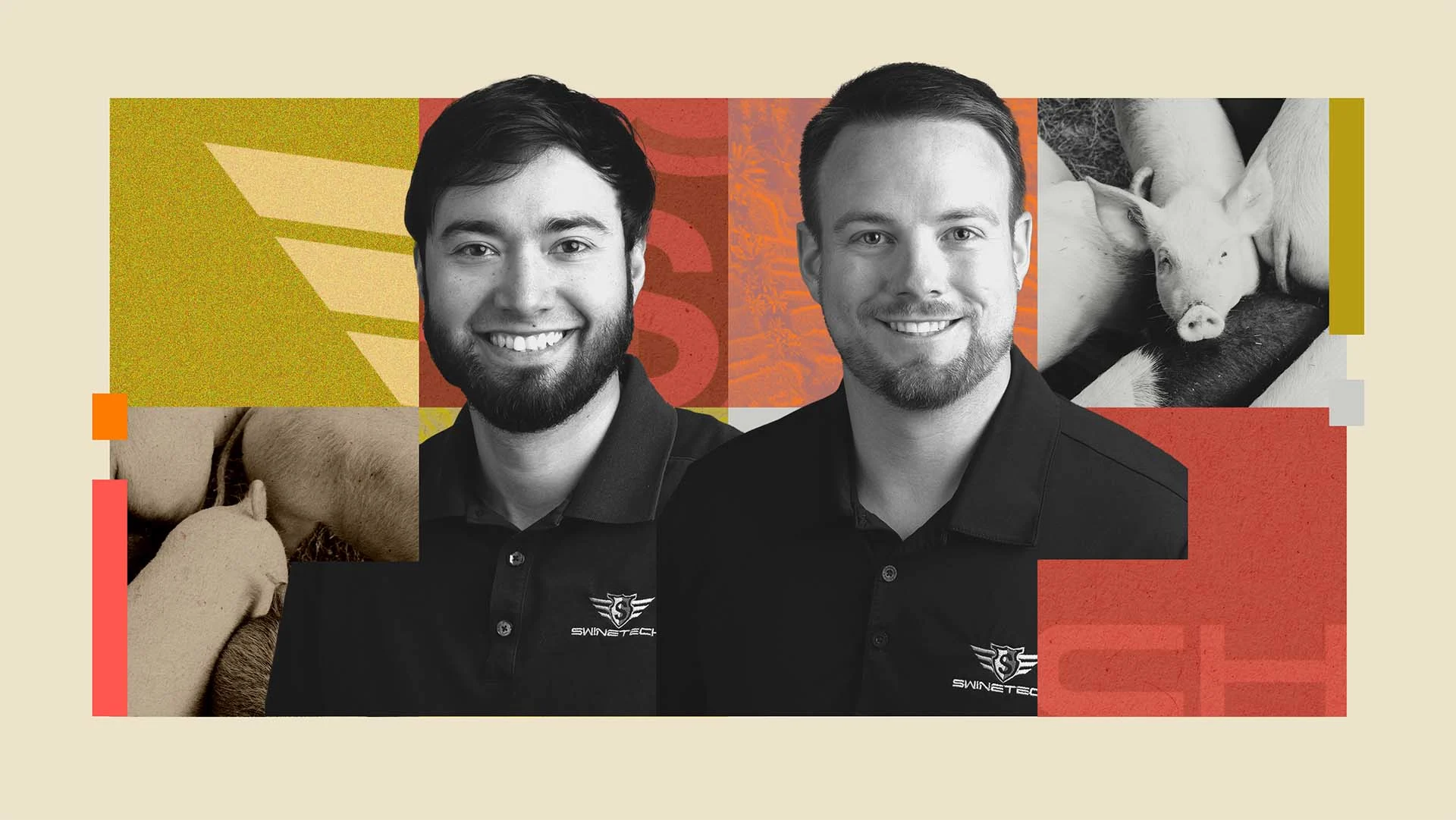
When college roommates Matthew Rooda and Abraham Espinoza started SwineTech in 2015, they had a single ambition: To use technology to give farmers more visibility into what’s happening on their farms. A decade later, their company is pulling in nearly $5 million in revenue—but not without making a major pivot.
Rooda, 31, a fourth-generation pork producer, knew the needs of swine producers inside and out. Espinoza, 33, moved from Mexico to study computer science at the University of Iowa, and had the technical background to build prototypes.
Their first product, SmartGuard, used voice-recognition to detect when mother pigs have rolled on top of their offspring, a leading cause of death among newborn piglets. On the strength of their concept, SwineTech was accepted into the Iowa Startup Accelerator in 2015.
Over the next two years, the Cedar Rapids, Iowa-based company entered 31 pitch competitions and won 27 of them, securing close to $500,000 in grants from the likes of Microsoft, Under Armour, the American Farm Bureau Federation, and MIT. With that funding in hand, the pair spent nights at pig farms near the University of Iowa campus, staying out until sunrise to capture audio data for SwineTech’s algorithm, and cycling through hundreds of prototypes for wearables.
Featured Video
An Inc.com Featured Presentation
SwineTech was in the process of raising more funding when the coronavirus pandemic hit. The resulting economic uncertainty upended their ability to raise the funds needed to build a novel piece of hardware. Meanwhile, as farmers faced uncertain conditions, the demand for new ag tech was also contracting.
“We basically had to throw away everything we’ve done and start from scratch,” Rooda says of that time. “We had to think simpler but more broadly.” That meant setting aside SwineGuard and developing point-of-care software to touch every aspect of farm operations.
While some potential investors pulled out, the company eventually closed a $5 million series A1 funding round in April 2020, led by early-stage ag-tech investor Innova Memphis with participation from Johnsonville Ventures, the venture arm of Wisconsin-based sausage maker Johnsonville, a major buyer of American pork.
“Our thesis is anytime you can make an investment that helps to strengthen, stabilize, or sustain our base business, that’s a worthy investment for consideration,” says Johnsonville Ventures president Kevin Ladwig.
Much of the innovation in animal care technology comes from big agricultural companies or animal-health conglomerates. One issue, Rooda says, is that the adoption cycle for business-to-business agricultural technology tends to be long. New companies tend to flame out or see their ideas replicated by larger corporations before they can get traction.
But Ladwig believes SwineTech could be an exception. “I would not count out very scrappy entrepreneurial type folks like Matthew Rooda, who saw an opportunity and had the credibility and respect from the industry to go out, roll his sleeves up, and visit farms and barns to say, here’s a new tool,” he added.
In 2021, SwineTech debuted PigFlow, a smartphone app pulls data from external sensors and uses AI to identify patterns and give users a real-time look at an animal’s care needs. The tool also helps keep track of the information farms need to provide for animal welfare audits and makes sure farms are complaint with rules for managing antibiotics and vaccines. Its translation function eases communication among workers, many of whom are non-English speakers on work visas.
The pivot was a success. Rooda credits the software with saving the company. The new direction also put SwineTech on a path that landed them at number 247 on the Inc. 5000 list of the fastest-growing companies in America for 2025. The company had a three-year growth rate of 1,581 percent.
“What we’ve been able to do to improve quality of care tripled the value of what we were expecting to gain out of a more deep-tech, autonomous voice-recognition path,” Rooda says.
Farmers also seem to love the product. “I’ve been around this place my whole life and watched it change over time,” says Dakota Steber, an assistant manager at Illinois-based pork producer, Borgic Farms, that started using PigFlow in October 2022.
Steber says the PigFlow installation took three days with a demo for workers on the third day. On the fourth, they started using the system across the farm. The employees, who range in age from 20 to 60 and are a mix of English and Spanish speakers, were given dedicated smartphones for the system. It was the first time some of the workers had ever used a smartphone.
“The more seasoned folks didn’t really love the technology aspect of it and didn’t want much to do with it,” he says. “But within literally hours of picking it up, they were on board and figured out how much better it was going to make their lives.”
Today, Borgic Farms uses PigFlow to manage every aspect of work on the farm. Department heads create task lists for farm workers each day, and team members arrive in the morning knowing exactly what they need to do. Overall, the system has allowed the farm to cut its staff by 10 percent—an important consideration given the labor shortage in the agricultural industry. It’s also seen a reduction in the number of stillborn piglets, thanks to the better care workers are able to provide.
Building on its current momentum, last year, SwineTech raised a series A2 round led by UK-based livestock genetics company Genius PLC, which brought in an additional $6.6 million. (To date, it’s raised a total of about $13 million.)
As for what’s next, Espinoza says SwineTech, which currently has about 20 employees, hopes to move into other countries. The company has already expanded to Canada and Australia. Eventually, he says, they plan to adapt the systems to use at dairy and poultry farms too.



